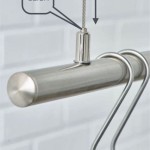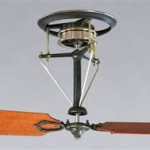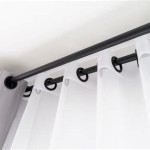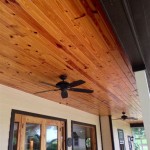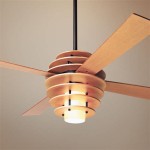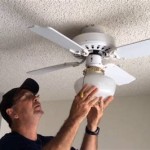Here is an article about False Ceiling Meaning In Tamil.
False Ceiling Meaning In Tamil: A Comprehensive Guide
The concept of a false ceiling, also known as a dropped ceiling, suspended ceiling, or T-bar ceiling, is a prevalent architectural and interior design element worldwide. Understanding its meaning, applications, and benefits is crucial for anyone involved in building construction, interior decoration, or property management. This article explores the meaning of "false ceiling" in Tamil, along with a detailed overview of its various aspects.
The direct translation of "false ceiling" in Tamil is பொய் உச்சவரம்பு (Poi Uchchavarambu). This phrase translates literally to "false upper limit" or "false ceiling limit." The term accurately reflects the core concept of a false ceiling, which is a secondary ceiling suspended below the main structural ceiling of a room or building. This suspended ceiling creates a void between itself and the structural ceiling, offering numerous functional and aesthetic advantages.
False ceilings are constructed using a variety of materials, including gypsum boards, mineral fiber tiles, metal panels (aluminum or steel), PVC panels, and wooden planks. The selection of material depends on the desired aesthetic, functional requirements, and budget constraints of the project. Each material offers unique properties in terms of fire resistance, sound absorption, moisture resistance, and durability.
The installation process typically involves suspending a grid of metal channels from the structural ceiling using wires or hangers. These channels form a framework to which the chosen ceiling panels are attached. The space between the structural ceiling and the false ceiling can then be utilized for concealing various services, such as electrical wiring, plumbing pipes, HVAC ductwork, and sprinkler systems. This allows for easier access for maintenance and repairs without disrupting the aesthetics of the room.
The use of false ceilings has become increasingly popular in both residential and commercial buildings due to their versatility and numerous benefits. They provide a cost-effective solution for improving the aesthetics of a space, enhancing acoustics, and concealing unsightly building services. Furthermore, they can contribute to energy efficiency by reducing the volume of space that needs to be heated or cooled.
Acoustic Performance Enhancement
One of the primary benefits of installing a false ceiling is its ability to improve the acoustic performance of a room. The void between the structural ceiling and the false ceiling acts as a sound buffer, helping to reduce noise transmission and reverberation. This is particularly important in environments such as offices, classrooms, hospitals, and theaters, where noise control is critical for productivity, learning, healing, and entertainment.
Acoustic ceiling tiles are specifically designed to absorb sound waves, preventing them from reflecting off hard surfaces and creating echoes. These tiles are typically made from mineral fiber, fiberglass, or recycled materials and are available in a variety of patterns and textures to complement different interior designs. The use of acoustic ceiling tiles can significantly reduce noise levels and improve speech intelligibility, creating a more comfortable and productive environment.
In addition to acoustic ceiling tiles, other sound-absorbing materials can be incorporated into the false ceiling system, such as acoustic blankets or insulation. These materials are placed within the void above the ceiling tiles, further enhancing the sound absorption capabilities of the system. The combination of acoustic ceiling tiles and sound-absorbing materials can effectively minimize noise pollution and create a more peaceful and conducive atmosphere.
The effectiveness of a false ceiling in improving acoustic performance depends on several factors, including the type of ceiling tile used, the size and shape of the room, and the level of noise reduction required. It is important to consult with an acoustic specialist to determine the most appropriate type of false ceiling system for a specific application. Proper installation is also crucial to ensure that the ceiling performs as intended and delivers the desired acoustic benefits.
Concealing Building Services
Another significant advantage of false ceilings is their ability to conceal unsightly building services, such as electrical wiring, plumbing pipes, HVAC ductwork, and sprinkler systems. These services are essential for the functionality of a building but can detract from the aesthetics of a space if left exposed. False ceilings provide a clean and organized way to hide these services, creating a more visually appealing environment.
By concealing building services above the false ceiling, the space becomes more flexible and adaptable. Changes or upgrades to these services can be made without disrupting the appearance of the room. Access panels can be strategically placed in the false ceiling to allow for easy maintenance and repairs. This eliminates the need to tear down walls or ceilings to access the services, saving time and money.
The concealment of building services also enhances the safety of the space. Exposed wiring and pipes can pose a hazard, especially in areas with high traffic or where children are present. By encasing these services within the false ceiling, the risk of accidental contact or damage is reduced. This contributes to a safer and more secure environment for occupants.
The design of the false ceiling system should take into consideration the placement and accessibility of the building services. The grid pattern and panel size should be carefully planned to ensure that access panels can be easily installed and removed. The height of the false ceiling should also be sufficient to accommodate the services and allow for adequate headroom. Proper coordination between the architect, engineer, and contractor is essential to ensure that the false ceiling system effectively conceals the building services while maintaining functionality and accessibility.
Energy Efficiency Improvements
False ceilings can contribute to energy efficiency by reducing the volume of space that needs to be heated or cooled. By lowering the ceiling height, the area to be conditioned is reduced, resulting in lower energy consumption. This is particularly beneficial in buildings with high ceilings, where the cost of heating and cooling can be significant.
Additionally, the void above the false ceiling can be filled with insulation to further enhance energy efficiency. Insulation helps to reduce heat transfer between the structural ceiling and the room below, keeping the space warmer in the winter and cooler in the summer. This reduces the reliance on heating and cooling systems, resulting in lower energy bills and a reduced carbon footprint.
The type of insulation used in the false ceiling system can also affect its energy efficiency. Fiberglass insulation is a common choice due to its affordability and effectiveness. However, other types of insulation, such as mineral wool or cellulose, may offer better performance in terms of thermal resistance and sound absorption. The selection of insulation should be based on the specific needs and requirements of the building.
The color of the false ceiling can also impact its energy efficiency. Lighter-colored ceilings reflect more light, reducing the need for artificial lighting. This can result in lower energy consumption and a more comfortable environment. Darker-colored ceilings absorb more light, which can increase the need for artificial lighting and potentially raise the temperature of the room. Therefore, it is generally recommended to choose a lighter-colored false ceiling to maximize energy efficiency.
In conclusion, பொய் உச்சவரம்பு (Poi Uchchavarambu), the Tamil translation for false ceiling, effectively encapsulates the concept of a suspended ceiling installed below the main structural ceiling. These ceilings offer numerous benefits, including improved acoustics, concealment of building services, and enhanced energy efficiency. The choice of materials, design, and installation techniques should be carefully considered to ensure that the false ceiling meets the specific needs and requirements of the building and its occupants.

False Ceiling ப ட ற ங கள இத ர க

False Ceiling Design With In Tamil Illam Contact 9092445561

Gypsum False Ceiling At Best In Chennai By True Value Interiors Id 10393865212

False Ceiling ப ட ற ங கள இத ர க
What Is The Difference Between False Ceiling And Stretch Quora

Latest False Ceiling Design For Bedroom In N Houses 2024

Difference Between Gypsum Board Vs Pop Tamil
What Is The Advantage Of A False Ceiling Quora

Choose Best False Ceiling Designs For Your Home

Choose Best False Ceiling Designs For Your Home
Related Posts

